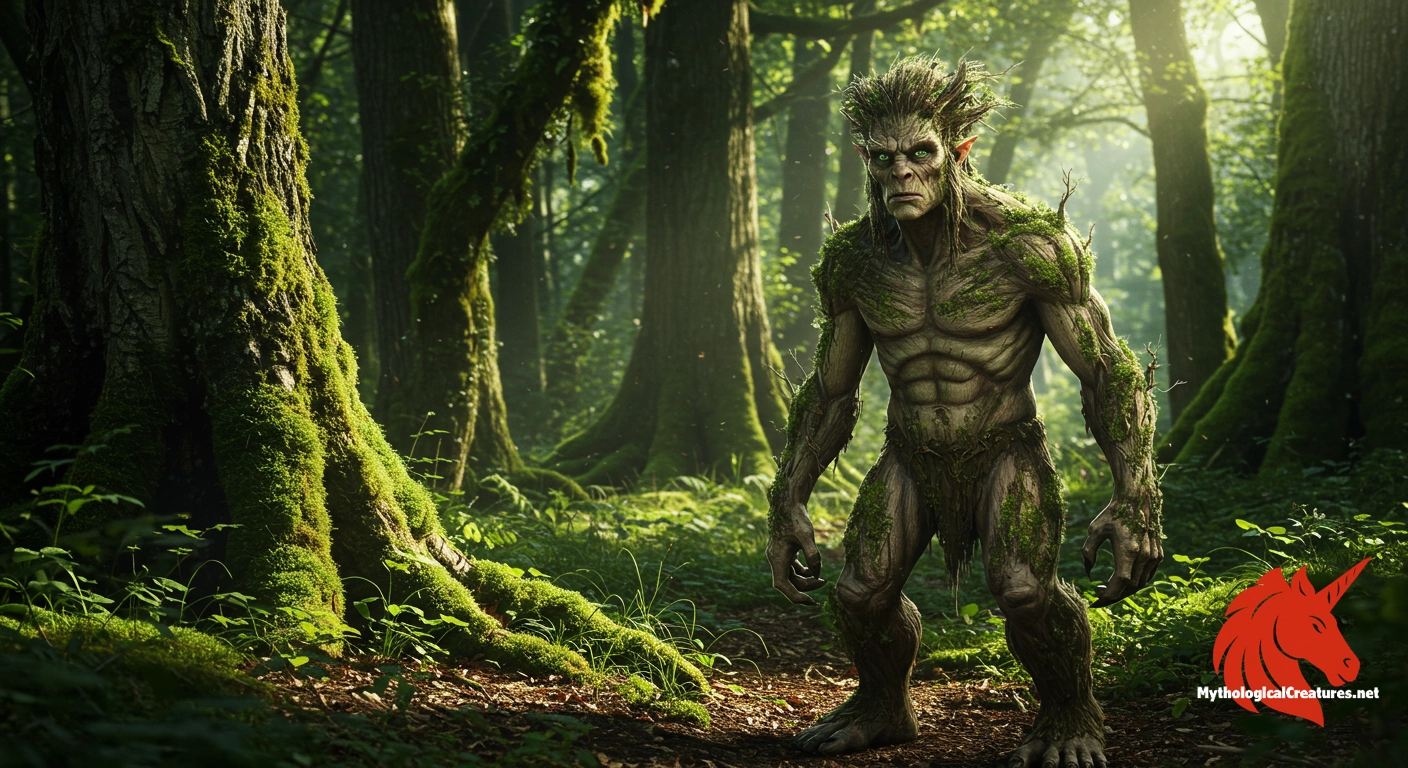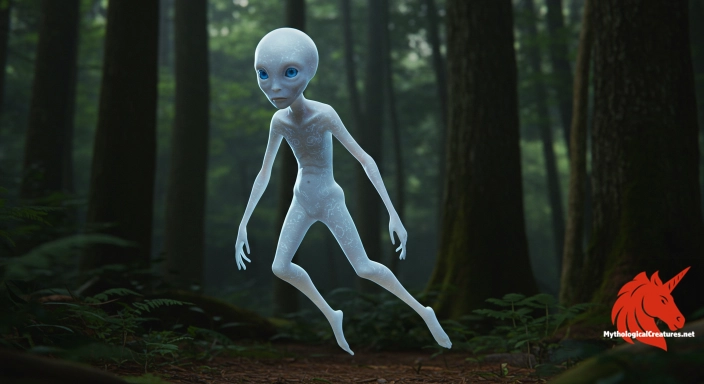Leshy: Leshy is a tutelary forest deity from Slavic mythology.

Leshy
Leshy - Embodies both the nurturing and dangerous aspects of the wilderness in Slavic folklore
Origins & First Encounters
Leshy is a captivating forest deity whose origins are deeply rooted in the pagan traditions of the Slavic peoples. His presence is interwoven with ancient woodland rites and the collective memory of rural communities across Eastern Europe. Raised on the timeless narratives of the forest, he embodies the spirit of the untamed wild whilst also commanding the respect of those who dwell near his wooded domain. Tales of his ability to both guide and mislead travellers have coloured the folklore of various Slavic regions over successive generations. His association with hunting and the natural order reflects an intimate connection with the cycles of life in the forest. Early attestations of Leshy are found in the oral traditions and early manuscripts that recorded the interplay of human life with the mysterious wilderness. Although often appearing as a masculine humanoid, his form is never fixed, echoing the ever-changing nature of the woods he oversees. Regional myths sometimes entwine his identity with that of other forest deities such as Porewit or Svyatibor, adding layers of complexity to his character. The lore of Leshy illustrates how the ancient respect for nature could blur the lines between benevolence and caprice. Ultimately, he remains a powerful symbol of the enduring and unpredictable spirit of the forest.
Source Texts & Tale Variants
The primary sources that recount the legend of Leshy stem from a rich tapestry of oral traditions, local folk-tales, and early ethnographic records. Early manuscripts and scattered references within Slavic liturgical texts offer but a glimpse into his mythic past. Various regional compilations have preserved his multifaceted story, although details differ from one locality to another. Accounts collected from rural villages reveal him as a guardian of the woodlands, whose temperament could oscillate between kindness and trickery. His narrative is enriched by inclusions of familial connections, such as the mentions of his wife, often known as Leshachikha, and his diminutive offspring. Over the centuries, his myth was adapted by storytellers who would embellish his adventures to suit the local cultural context. Diverse variants depict him as either a kindly protector of lost souls or a capricious force that challenges the unwary. Folk songs, seasonal rituals, and regional festivals have all served as vessels for transmitting his legend from one generation to the next. Although written records are fragmentary, they highlight the importance of his character in the collective Slavic memory. The assortment of sources ensures that Leshy’s legacy persists, continually evolving with each retelling.
Form & Powers
Leshy is most often depicted as a strikingly tall, robust figure whose appearance evokes the rugged essence of the forest. His hair is frequently described as wild and unkempt, reminiscent of tangled undergrowth, and his eyes shine with the deep, unfathomable green of ancient woodland canopies. Standing at varying heights, he is fabled to both tower over travellers and, in other moments, shrink to a size that renders him nearly invisible amongst the ferns. His facial features are rugged and weathered, sometimes adorned with elements that suggest a fusion between man and nature, such as hints of bark or foliage-like textures. He traditionally wears garments that appear to be crafted from natural fibres, leaves, and vines, further blurring the boundary between his being and the forest environment. The tactile imagery of moss-covered skin and earthy scents often accompanies descriptions of his presence. In some retellings, his head is crowned with antler-like protrusions or clusters of leaves, signifying his sovereign status over nature. His muscular yet graceful form has been celebrated in legends as both a reflection of the forest’s power and its delicate beauty. This mutable form symbolises the ancient belief that nature is ever-changing and dynamic. Through his physicality, Leshy embodies an eternal link between humankind and the wild forces of the natural world.
Regional Faces
Across the diverse landscapes of Eastern and Western Slavic territories, the portrayal of Leshy adapts to local environments and cultural nuances. In the vast, dense forests of Russia and Ukraine, he is often rendered as a shadowy, enigmatic figure who both aids and admonishes those who traverse his realm. In the more pastoral regions of Poland and Belarus, his character takes on a protective quality, appearing as a guardian who rewards respectful engagement with nature. Local lore sometimes imbues him with additional attributes, such as associations with river spirits or even winter deities, reflecting the specific climatic and ecological contexts. Some regional versions grant him a more benevolent character, where he is celebrated during seasonal festivals as an honoured protector of the natural order. Others emphasise his mischievous and unpredictable nature, warning of his ability to misguide or even abduct the unwary. Folktales across different villages invariably incorporate local flora, fauna, and weather patterns, thus tailoring Leshy to the unique rhythms of each environment. His depiction may also vary in symbolic detail, with the wearing of specific natural accoutrements that mirror regional vegetation. In some traditions, his presence is interlinked with seasonal rites marking the cycle of growth and decay. These regional variations underscore the adaptability and enduring significance of his myth in connecting communities to the natural world.
Cultural Parallels
When examining Leshy alongside other mythological figures, one finds striking parallels with similar forest guardians and trickster deities from various cultures. Like the Greek god Pan or the Roman Silvanus, Leshy embodies the wild and untamed aspects of nature, acting as both protector and punisher. His dual character, offering help to the respectful and misfortune to the impudent, mirrors the ambiguous moral lessons found in many European nature myths. In the realms of Celtic and Norse legend, one encounters spirits and faeries whose temperament oscillates between benevolence and mischief, akin to the unpredictable nature of Leshy. The concept of shape-shifting and transformative power is a common thread that runs through these diverse mythic traditions, linking him to global archetypes of nature deities. His ability to alter his form draws an interesting comparison with the metamorphic qualities celebrated in other indigenous mythologies. This comparative perspective highlights the universal human fascination with the untamable and mysterious forces of the wilderness. Even contemporary reinterpretations continue to juxtapose his complex nature against the familiar narratives of mythic guardians. The overlapping themes of reverence for nature and the enforcement of moral boundaries can be seen as a unifying element among these mythic figures. Thus, Leshy stands as a quintessential example of how ancient cultures sought to explain the wild, unpredictable spirit that animates both the forest and the human soul.
Legacy & Modern Evolution
The evolution of Leshy’s depiction reflects the broader cultural shifts from ancient pagan worship to modern reinterpretations in literature and the arts. His myth has been continuously reimagined over the centuries, transitioning from a revered forest guardian to a symbol of nature’s enduring mystery in modern storytelling. Contemporary portrayals often capture his inherent duality, presenting him as both a capricious trickster and a profound custodian of the natural world. Modern writers and filmmakers have reinterpreted his character, infusing him with attributes that resonate with current environmental concerns and the celebration of biodiversity. His presence in urban fantasy novels and graphic narratives reinforces the timeless appeal of myth in addressing modern existential themes. The enduring motif of nature’s power, embodied in Leshy, has inspired new artistic expressions and eco-centred cultural events. His figure is frequently revived during folklore festivals and theatrical productions, which aim to reconnect communities with their ancestral roots and the environment. Over time, his image has come to represent not only the unpredictability of the natural world but also a call for a respectful coexistence with nature. Academic interest in his myth underlines a broader shift towards re-examining and valuing indigenous folk traditions. In many respects, the legacy of Leshy continues to inspire a balanced view of nature as both a nurturing and challenging force, bridging ancient lore and contemporary environmental ethos.
Interesting Fact
An interesting aspect of Leshy is his ability to change his size and form, allowing him to interact with mortals in unpredictable ways and symbolise the mutable nature of the wild.
Quick Creature Info
Features:
Associations:
Our Mythic Legendary Rating:

Also Sometimes Known As:
Habitat:
Supernatural Powers:
Physical Attributes:
Abilities:
Behavior:
Weaknesses:
Lore:
Related Creatures, Tales or Lore
- PPan
- SSilvanus
- CCernunnos
References
Discover Another Mythical Legend You May Not Have Heard Of?
Uncover the mysteries of ancient folklore and expand your knowledge of legendary beings from cultures around the world.
Dare to Meet the Uwan....
Curated by the Mythological Creatures Team (rev. May 2025)
